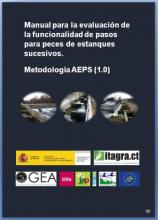The expected outcomes of this project are the following ones:
• Development of some guidelines for the production of a detailed mapping of the borders of the River and Wetland SCI/SPAs in Castilla y León.
• Detailed mapping of habitats and correction of the cartographic borders of 9 Wetland SCIs (1:5,000) and of 30 River SCIs (1:10,000) which lack detailed mapping at the moment.
• Updating of the normal forms of the Natura 2000 database of the SCI/SPAs targeted in the project.
• Centralization of the census information and studies about flora and fauna species of Communitarian importance that are linked to water and are present in the Mediterranean biogeographic region of Castilla y León.
• Development of studies on taxonomical groups about which there is a lack of information nowadays (invertebrate species, bats, water flora and amphibians of Communitarian importance).
• Development of studies about species that indicate the rivers and wetlands environmental quality (ardeas, marsh harriers and picidae).
• Assessment of the main exotic flora and fauna invading species present within the territorial scope of the project.
• Establishment of guidelines and management measures for preventing, controlling, eradicating and monitoring exotic flora and fauna invading species linked to the water environment in Castilla y León.
• Eradication of those specimens of exotic invading species that will be caught while sampling.
• Limnological assessment of SCI/SPAs within the territorial scope of the project where the requirements set by the Water Framework Directive and the Habitats and Birds Directives are included.
• Integration of the Natura 2000 network within the monitoring networks carried out by Hydrological Societies.
• Data collection in water areas that are not assessed by the actual water quality and quantity monitoring networks.
• Assessment of the landscape conservation condition and of the territorial areas linked to water environments, that are also considered to be a keystone for guaranteeing and implementing connectivity within the
Natura 2000 Network (Wetlands classified at regional standards, river reservoirs within the Mediterranean biogeographic regional scope not belonging to the Natura 2000 network and crypto-wetlands, which are interesting because they include habitats and species of Communitarian importance).
• Categorization and assessment of the condition of conservation and usefulness of the proposed ecological corridors and identification of critical areas where the connections functionality is in danger.
• Inclusion within the National Wetlands Inventory of high natural value wetlands that are relevant to the regional connectivity and are not currently part of the Natura 2000 network.
• Assessment of strains and threats to the River and Wetland SCI/SPAs within the Castilla y León Mediterranean biogeographic region.
• Establishment of guidelines to develop a computer programme for monitoring the SCI/SPAs management and the conservation condition of habitats and species of Communitarian importance.
• Availability of a Natura 2000 network cartographic viewer that must be accessible from the environment website of the Junta de Castilla y León.
• Designing the stakeholding course of action around the elaboration and implementation of the Management and Monitoring Programme of the Natura 2000 network within the Castilla y León Mediterranean biogeographic region.
• Creation and approval of a shared Management Programme for the River and Wetland Mediterranean SCI/SPAs in Castilla y León.
• Development of a Programme for monitoring species and habitats of Communitarian importance in River and Wetland SCI/SPAs within the Castilla y León Mediterranean biogeographic region.
• The communication plan must be regularly reviewed and updated.
• Elaboration and availability of a Spanish and English webpage that must be steadily updated with all the information related to the project as well as the outcomes of the actions carried out.
• Informative report written in Spanish and English (Layman´s report)
• To improve the outcomes of the actions intended in LIFE+ with the contributions of other professional as well as the divulgation of the project in regional, state and European spheres.
• Training of the main agents responsible for the environmental surveillance, territorial management and environmental education linked to the regional administration as regards the management and monitoring of the Natura 2000 network.
• To improve schoolchildren awareness of the Natura 2000 network by raising their concerns about the necessity and importance of preserving habitat, species and ecological processes linked to river and wetland environments.



